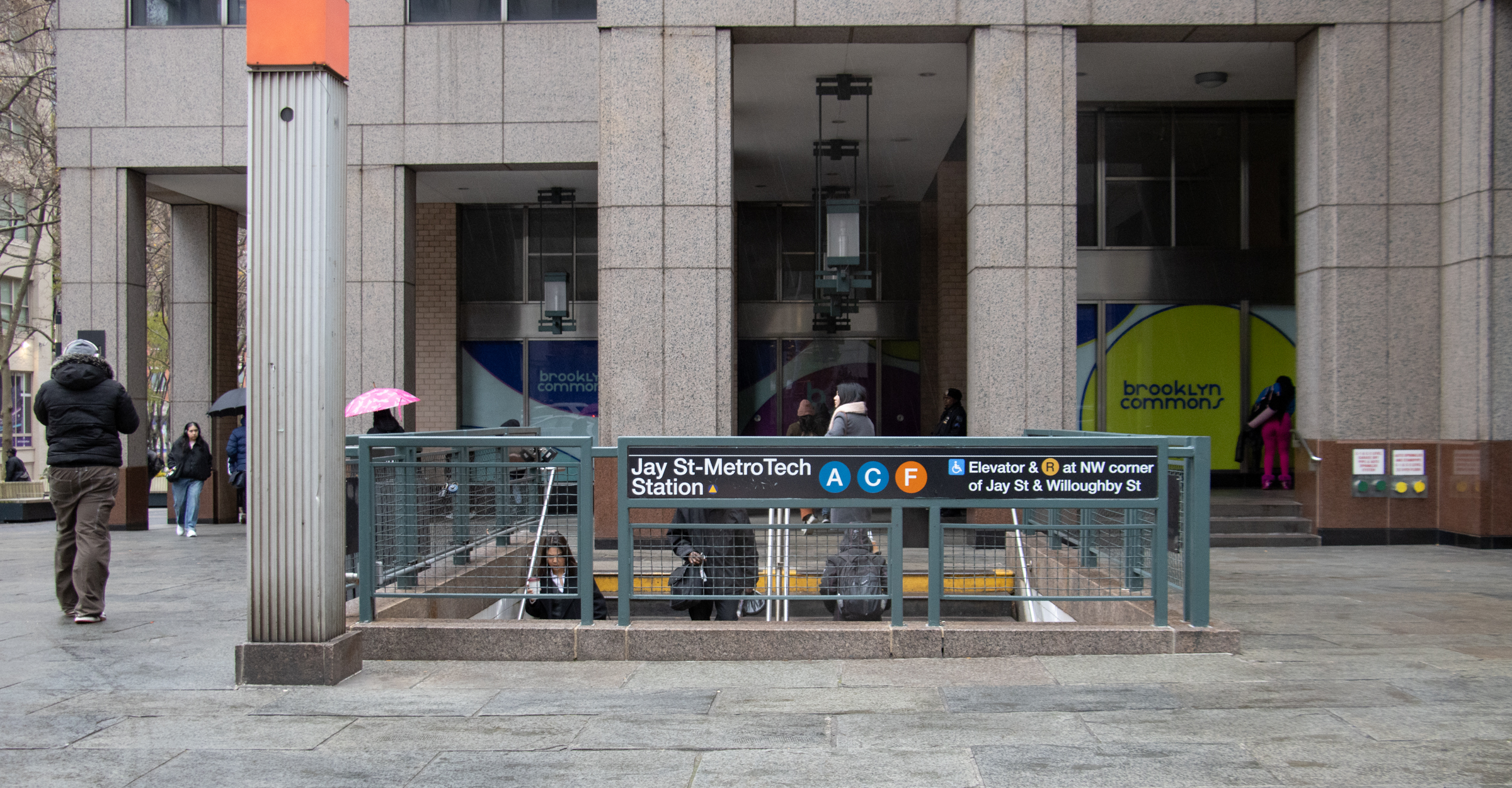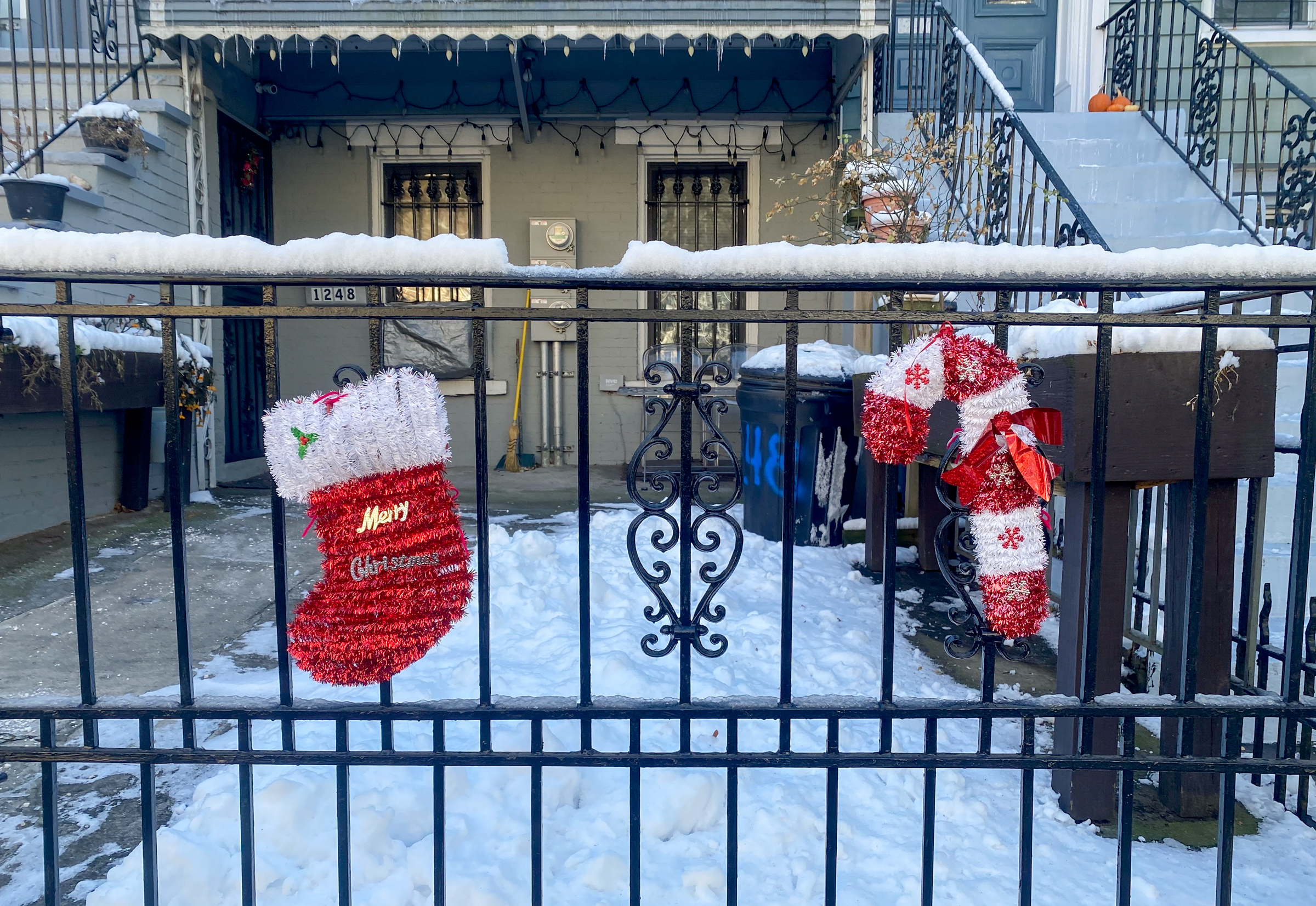Tuesday Links
Williamsburg. Photo by the real janelle. M.T.A. Delays Improvements, Citing Drop in Real Estate Sales Taxes [NY Times] Clinton Calls for $30 Billion for Home Mortgage Crisis [NY Times] Budget Has Bigger-Than-Expected Education Cuts [NY Sun] Some Burg Owners Unhappy About New Rezone [NY Post] Heights’ Herman Behr Mansion Sells For $11M [Brooklyn Eagle] Brooklyn…


Williamsburg. Photo by the real janelle.
M.T.A. Delays Improvements, Citing Drop in Real Estate Sales Taxes [NY Times]
Clinton Calls for $30 Billion for Home Mortgage Crisis [NY Times]
Budget Has Bigger-Than-Expected Education Cuts [NY Sun]
Some Burg Owners Unhappy About New Rezone [NY Post]
Heights’ Herman Behr Mansion Sells For $11M [Brooklyn Eagle]
Brooklyn Flea Grabs Fort Greene [NY Daily News]





The MTA is just unbelievable!
10:45’s description of Case Shiller’s methodology is wrong. There is no reason to think that it is overstating the crisis (except to the extent that it understated the bubble). Here is the correct description: http://www2.standardandpoors.com/spf/pdf/index/SP_CS_Home_Price_Indices_Methodology_Web.pdf
If you want to ignore Case Shiller, the better reasons are (1) it counts only single family homes and therefore misses the entire NYC condo and coop and 2-4 family markets, and (2) like every other national statistic, it lumps NYC together with its suburbs.
NYC + ‘burbs dropped 6%. Given the Case-Shiller methodology, that really means the suburbs dropped 6%.
You could assume that Manhattan and brownstone Brooklyn are an entirely separate market — that no one chooses between those areas and Westchester or Queens or Port Washington or Hoboken or Orange or whatever — so that prices drops in the suburbs will not affect us here. You could also assume that the brownstone market is immune to job losses on Wall Street, to the gap between prices and rental values and the gap between price increases and income increases, to the drop in the dollar, and to recession fears.
After all, real estate always goes up in NYC even when it drops everywhere else. Markets don’t work here the way they work everywhere else. Just like in Tokyo, or during the dot.com bubble, the normal laws of supply and demand have been repealed.
10:45’s description of Case Shiller’s methodology is wrong. There is no reason to think that it is overstating the crisis (except to the extent that it understated the bubble). Here is the correct description: http://www2.standardandpoors.com/spf/pdf/index/SP_CS_Home_Price_Indices_Methodology_Web.pdf
If you want to ignore Case Shiller, the better reasons are (1) it counts only single family homes and therefore misses the entire NYC condo and coop and 2-4 family markets, and (2) like every other national statistic, it lumps NYC together with its suburbs.
NYC + ‘burbs dropped 6%. Given the Case-Shiller methodology, that really means the suburbs dropped 6%.
You could assume that Manhattan and brownstone Brooklyn are an entirely separate market — that no one chooses between those areas and Westchester or Queens or Port Washington or Hoboken or Orange or whatever — so that prices drops in the suburbs will not affect us here. You could also assume that the brownstone market is immune to job losses on Wall Street, to the gap between prices and rental values and the gap between price increases and income increases, to the drop in the dollar, and to recession fears.
After all, real estate always goes up in NYC even when it drops everywhere else. Markets don’t work here the way they work everywhere else. Just like in Tokyo, or during the dot.com bubble, the normal laws of supply and demand have been repealed.
10:45’s description of Case Shiller’s methodology is wrong. Here is the correct description: http://www2.standardandpoors.com/spf/pdf/index/SP_CS_Home_Price_Indices_Methodology_Web.pdf
If you want to ignore Case Shiller, the better reasons are (1) it counts only single family homes and therefore misses the entire NYC condo and coop and 2-4 family markets, and (2) that, like every other national statistic, it lumps NYC together with its ‘burbs.
NYC+’burbs dropped 6%. Given the Case-Shiller methodology, that really means the suburbs dropped 6%. You could assume that Manhattan and brownstone Brooklyn are a separate market — that no one chooses between those areas and Westchester or Port Washington or Hoboken or whatever — so that prices drops in the ‘burbs will not affect us here.
You could also assume that the brownstone market is immune to job losses on Wall Street, to the gap between prices and rental values and the gap between price increases and income increases, to the drop in the dollar, and to recession fears.
After all, real estate always goes up in NYC even when it drops everywhere else. Just like in Tokyo.
10:45’s description of Case Shiller’s methodology is wrong. Here is the correct description: http://www2.standardandpoors.com/spf/pdf/index/SP_CS_Home_Price_Indices_Methodology_Web.pdf
If you want to ignore Case Shiller, the better reasons are (1) it counts only single family homes and therefore misses the entire NYC condo and coop and 2-4 family markets, and (2) that, like every other national statistic, it lumps NYC together with its ‘burbs.
NYC+’burbs dropped 6%. Given the Case-Shiller methodology, that really means the suburbs dropped 6%. You could assume that Manhattan and brownstone Brooklyn are a separate market — that no one chooses between those areas and Westchester or Port Washington or Hoboken or whatever — so that prices drops in the ‘burbs will not affect us here.
You could also assume that the brownstone market is immune to job losses on Wall Street, to the gap between prices and rental values and the gap between price increases and income increases, to the drop in the dollar, and to recession fears.
After all, real estate always goes up in NYC even when it drops everywhere else. Just like in Tokyo.
I was being facetious about Charlotte. Only mentioned it because it is the only city where property values rose (see the What’s chart).
Seriously, remaining here is contingent on what the next 72 hours and May bring regarding middle and high school acceptances.
Yeah I would not expect to find better students in Charlotte schools. The economy is decent down there because of the job market but that city is very suburban and Southern. Raleigh or Chapel Hill is where to go if you want smarter hipper parents and kids.
Good luck in Charlotte 10:55 AM
My sister, a public school teacher, just moved there after teaching 8 years in Brooklyn schools. She has more problems down there both with kids and the heirarchy than she ever did in Brooklyn.
Good luck in Charlotte 10:55 AM
My sister, a public school teacher, just moved there after teaching 8 years in Brooklyn schools. She has more problems down there both with kids and the heirarchy than she ever did in Brooklyn.